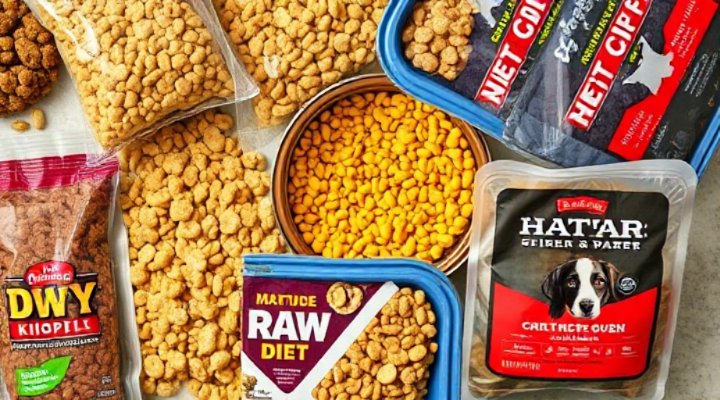Choosing the right dog food is one of the most important decisions you’ll make as a pet owner. After all, what your dog eats directly impacts their health, energy levels, and overall well-being. With so many options available – from dry kibble to wet food, raw diets to grain-free formulas – it can be overwhelming to know where to start. That’s why we’ve created this comprehensive guide to help you navigate the world of canine nutrition.

Understanding Your Dog’s Nutritional Needs
First and foremost, it’s crucial to understand that not all dogs have the same nutritional requirements. Factors like age, breed, size, and activity level all play a role in determining what type of dog food is best. For example, puppies need more protein and fat to support their growth, while senior dogs may benefit from food with joint-supporting ingredients.
I remember when I first adopted Max, my Labrador mix. I made the mistake of buying the cheapest food on the shelf, only to discover he was constantly hungry and lacked energy. After consulting with our vet and switching to a higher-quality option, the difference was night and day!

Types of Dog Food: Pros and Cons
Let’s break down the main types of dog food available:
- Dry Kibble: Convenient and cost-effective, but quality varies greatly
- Wet Food: More palatable and hydrating, but can be expensive
- Raw Diets: Mimic a dog’s natural diet but require careful handling
- Grain-Free: Popular but not necessarily better for all dogs
The American Veterinary Medical Association provides excellent resources on dog nutrition that can help you make an informed decision.

Reading Dog Food Labels Like a Pro
One skill every dog owner should master is reading dog food labels. Look for foods where real meat (like chicken or beef) is the first ingredient, and be wary of vague terms like ‘meat by-products’. The guaranteed analysis section will tell you the percentages of protein, fat, fiber, and moisture.
If you’re interested in learning more about dog care beyond nutrition, check out our guide on how to train your dog to jump safely or tips for finding the right social spot for your furry friend.

Special Dietary Considerations
Some dogs have special needs that require particular attention to their dog food:
- Dogs with allergies may need limited ingredient diets
- Overweight dogs benefit from weight management formulas
- Small breeds often do better with smaller kibble sizes
- Active working dogs need higher-calorie options
Remember, when in doubt, your veterinarian is the best resource for personalized advice about your dog’s nutritional needs. The FDA also offers helpful guidelines on reading pet food labels.
Transitioning to New Food
When switching your dog to a new food, do it gradually over 7-10 days to avoid digestive upset. Start by mixing 25% new food with 75% old food, then slowly increase the ratio. Keep an eye out for any changes in your dog’s energy levels, coat condition, or stool quality – these are all indicators of how well the food is working for them.
For more tips on caring for your pet, explore our article on traveling with your dog by train or solutions for excited peeing.
Final Thoughts
Choosing the right dog food might seem daunting at first, but with a little research and guidance, you’ll find the perfect match for your canine companion. Remember that every dog is unique, so what works for one might not work for another. Pay attention to how your dog responds to their food, and don’t hesitate to make adjustments as needed.
Related keywords: healthy dog diet, premium dog food, dog nutrition guide, best dog food brands, homemade dog food recipes

